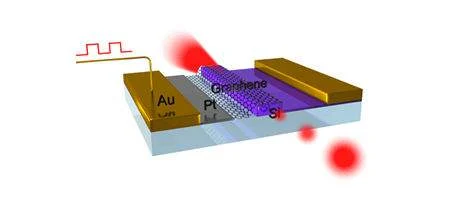3D movies could be downloaded to a smartphone in seconds with a new technology developed at the University of California, Berkeley.

Engineering professor Xiang Zhang and his team have built a tiny optical device that uses graphene to switch light on and off. It can be used as a network modulator, controlling the speed at which data packets are transmitted.
“Graphene enables us to make modulators that are incredibly compact and that potentially perform at speeds up to ten times faster than current technology allows,” says Zhang. “This new technology will significantly enhance our capabilities in ultrafast optical communication and computing.”
The researchers tuned the graphene electrically to absorb light in wavelengths used in data communication.
“Graphene is compatible with silicon technology and is very cheap to make. Researchers in Korea last year have already produced 30-inch sheets of it,” says Ming Liu, a post-doctoral researcher in Zhang’s lab.
“Moreover, very little graphene is required for use as a modulator. The graphite in a pencil can provide enough graphene to fabricate one billion optical modulators.”
The team found that the energy of the material’s electrons – their Fermi level – can be easily altered depending upon the voltage applied. The graphene’s Fermi level in turn determines if the light is absorbed or not.
With sufficient negative voltage, electrons are drawn out of the graphene and are no longer available to absorb photons, making the graphene totally transparent as the photons pass through. Graphene is also transparent at certain positive voltages because the electrons are then packed so tightly that they can’t absorb the photons.
But the researchers found a sweet spot in the middle where there is just enough voltage to allow the electrons to prevent the photons from passing, effectively switching the light ‘off’.
In their experiment, the researchers layered graphene on top of a silicon waveguide to fabricate optical modulators. They achieved a modulation speed of 1 gigahertz – but say the speed could theoretically reach as high as 500 gigahertz for a single modulator.
Graphene-based modulators could also overcome the space barrier of optical devices, says the team. The optical modulator measures just 25 square microns, compared with a few square millimeters for a typical commercial modulator.
“Graphene-based modulators not only offer an increase in modulation speed, they can enable greater amounts of data packed into each pulse,” says Zhang. “Instead of broadband, we will have ‘extremeband’.”
He says he expects to see industrial applications of the device in the next few years.






